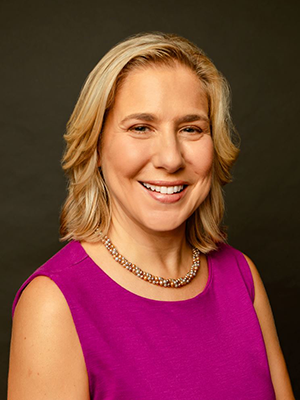The Hidden Risks in Every Sippy Cup
By Office of the President | Jan 28, 2025
The sippy cups and bottles we hand to our children may seem harmless, but could they pose hidden risks to their health? Concerns over the potential dangers of everyday plastic products led to the federal bisphenol A (BPA) ban on baby bottles and sippy cups in 2012. While this milestone addressed one primary source of exposure for infants, BPA, along with its chemical replacements, continues to surface in everyday items like plastic food containers, canned goods lined with BPA coatings, and even the thermal paper used for receipts—products that pregnant women encounter regularly.
 Lori A. Hoepner, DrPH, MPH, an Assistant Professor of Environmental and Occupational Health at SUNY Downstate,
is affiliated with the Environmental Influences on Child Health Outcomes (ECHO) consortium, a national network of more than 20 academic medical centers and public health schools.
This collaborative group investigates how environmental exposures impact children’s
health, focusing on identifying risks and promoting healthier outcomes.
Lori A. Hoepner, DrPH, MPH, an Assistant Professor of Environmental and Occupational Health at SUNY Downstate,
is affiliated with the Environmental Influences on Child Health Outcomes (ECHO) consortium, a national network of more than 20 academic medical centers and public health schools.
This collaborative group investigates how environmental exposures impact children’s
health, focusing on identifying risks and promoting healthier outcomes.
In its latest study published in the February 2025 issue of Environmental Pollution, the ECHO consortium examined how prenatal exposure to bisphenols—chemicals commonly found in plastics—might influence childhood conditions such as asthma, allergies, and eczema. Drawing on nearly two decades of data (1998–2017), researchers analyzed information from almost 2,000 mother-child pairs across 11 diverse groups in the United States.
The study focused on bisphenol A (BPA) and its common substitutes, bisphenol F (BPF) and bisphenol S (BPS). Public health experts have long raised alarms about BPA, a chemical known to disrupt hormones and labeled as an “endocrine disruptor.” While the 2012 federal ban on BPA in baby bottles and sippy cups reduced exposure from those products, manufacturers responded by replacing BPA with BPF and BPS—chemicals with similar structures that may pose comparable risks.
Scientists remain skeptical about the safety of these replacements. The chemical structures of BPF and BPS closely resemble BPA, indicating they may disrupt hormones in similar ways. The ECHO study found that prenatal exposure to all three bisphenols remains widespread. Although exposure patterns have changed over time, they persist, raising critical concerns about the safety of BPA substitutes and their potential long-term impact on children’s health.
The study did not find a clear connection between prenatal bisphenol exposure and asthma, allergies, or eczema. However, researchers observed some gender-specific effects. For instance, certain levels of BPF exposure showed a correlation with lower asthma rates in girls. In contrast, BPS exposure seemed to reduce the likelihood of eczema. These findings underscore bisphenols’ complex, hormone-related impacts on child development and highlight the importance of continued research.
Dr. Hoepner’s work highlights the importance of uncovering and addressing the intricate connections between environmental exposures and children’s health. By participating in the ECHO consortium, she advances critical research that informs public health policies and aims to safeguard future generations. Her findings contribute to the growing evidence that “BPA-free” does not always mean “risk-free,” emphasizing the urgent need for stronger protections for pregnant women and children against harmful chemicals.
By aligning her efforts with the ECHO consortium’s mission, Dr. Hoepner also reinforces Downstate’s commitment to understanding how environmental and social factors influence health outcomes, driving meaningful change in the field of public health.
While parents cannot entirely avoid bisphenol exposure, they can take practical steps to reduce risks. Choosing glass or stainless-steel containers, avoiding freezing or microwaving plastic, and staying informed about potential chemical exposures are proactive measures. At the same time, public advocacy for stronger regulations is essential to ensure that future products are genuinely safe for children.